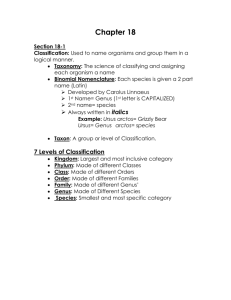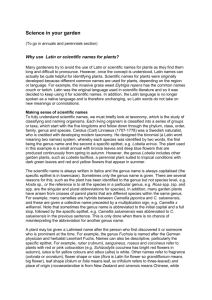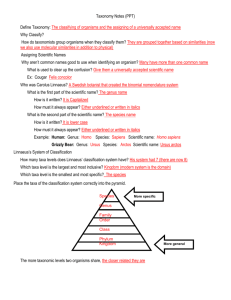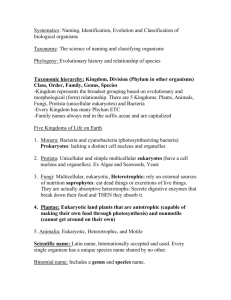06_Reading - What is a species
advertisement
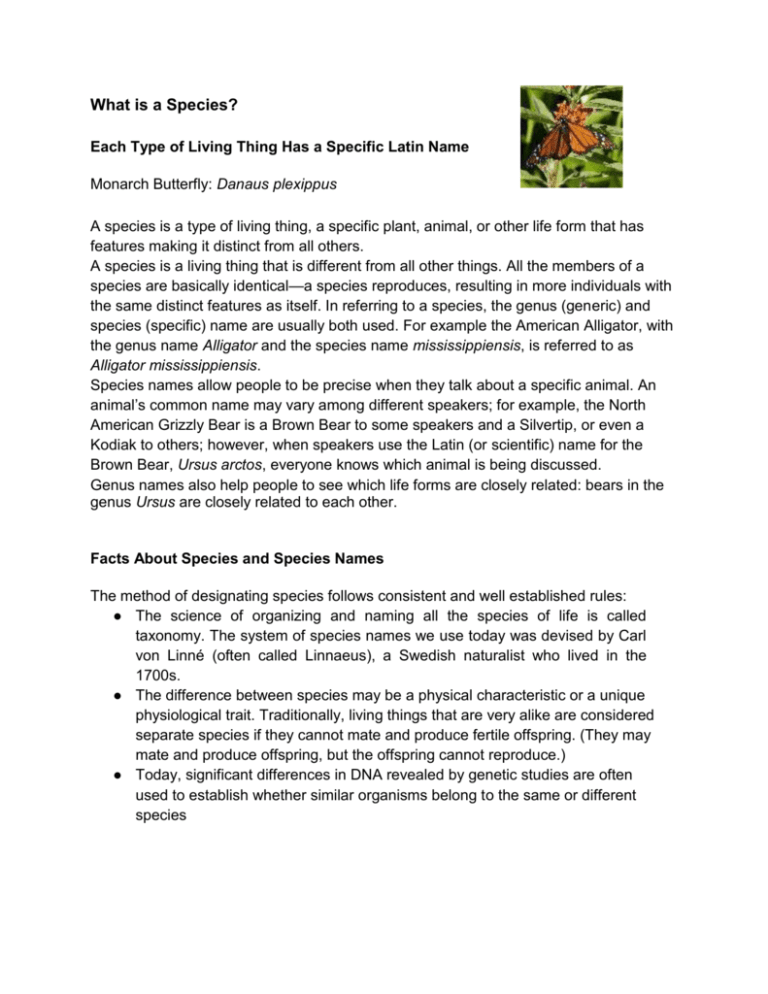
What is a Species? Each Type of Living Thing Has a Specific Latin Name Monarch Butterfly: Danaus plexippus A species is a type of living thing, a specific plant, animal, or other life form that has features making it distinct from all others. A species is a living thing that is different from all other things. All the members of a species are basically identical—a species reproduces, resulting in more individuals with the same distinct features as itself. In referring to a species, the genus (generic) and species (specific) name are usually both used. For example the American Alligator, with the genus name Alligator and the species name mississippiensis, is referred to as Alligator mississippiensis. Species names allow people to be precise when they talk about a specific animal. An animal’s common name may vary among different speakers; for example, the North American Grizzly Bear is a Brown Bear to some speakers and a Silvertip, or even a Kodiak to others; however, when speakers use the Latin (or scientific) name for the Brown Bear, Ursus arctos, everyone knows which animal is being discussed. Genus names also help people to see which life forms are closely related: bears in the genus Ursus are closely related to each other. Facts About Species and Species Names The method of designating species follows consistent and well established rules: ● The science of organizing and naming all the species of life is called taxonomy. The system of species names we use today was devised by Carl von Linné (often called Linnaeus), a Swedish naturalist who lived in the 1700s. ● The difference between species may be a physical characteristic or a unique physiological trait. Traditionally, living things that are very alike are considered separate species if they cannot mate and produce fertile offspring. (They may mate and produce offspring, but the offspring cannot reproduce.) ● Today, significant differences in DNA revealed by genetic studies are often used to establish whether similar organisms belong to the same or different species ● In order to establish a new species, a scientist must study it, name it, publish a precise description, and establish that it is significantly different from every other known species. ● Accepting new species and species names is the responsibility of an international committee. ● Species is correct for both singular and plural: one species, many species. ● Valid scientific names are those which have been assigned since Jan 1, 1758 ● The genus name is usually a noun, and is capitalized. The species name is usually an adjective and it is never capitalized, even if it is derived from someone’s name. Both genus and species names are written in italics. ● Species names are often derived from the name of the person who discovered them. Species may also be named after famous people, people associated with the person choosing the name, or places. Some come from Greek words, or simply from the imagination. ● Sometimes Latin names are followed by a name that is not italicized, and a year. This is the name of the person who named the species and the year in which it was named. ● Except in special circumstances, once a species has been formally named, its name will never be changed, even if scientists realize later that the name doesn’t make sense. This avoids the confusion of people referring to a species by different names. Read more at Suite101: What is a Species?: Each Type of Living Thing Has a Specific Latin Name | Suite101.com http://www.suite101.com/content/what-is-aspecies- a40667#ixzz1RMDMwAsu



